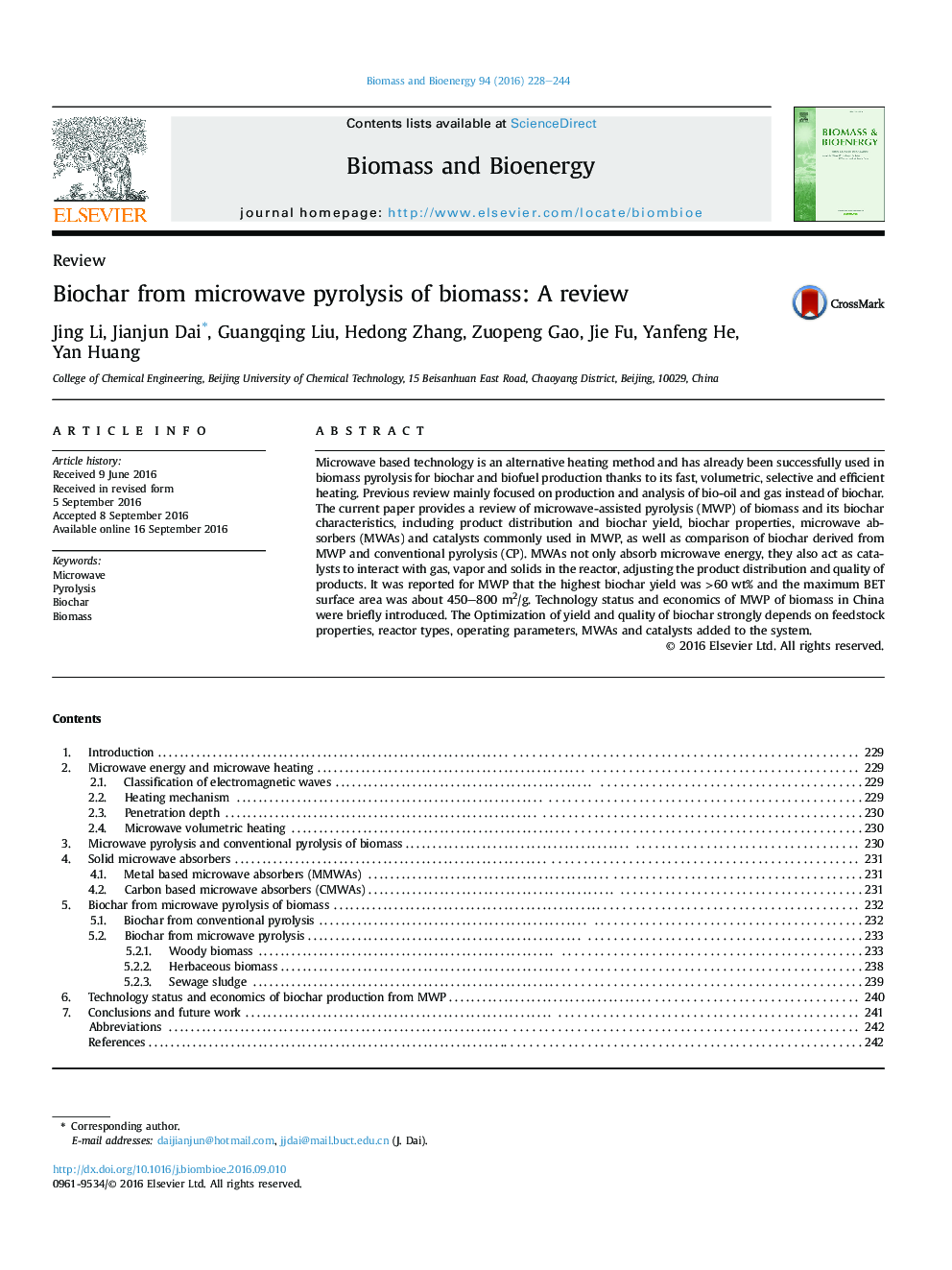| Article ID | Journal | Published Year | Pages | File Type |
|---|---|---|---|---|
| 7063155 | Biomass and Bioenergy | 2016 | 17 Pages |
Abstract
Microwave based technology is an alternative heating method and has already been successfully used in biomass pyrolysis for biochar and biofuel production thanks to its fast, volumetric, selective and efficient heating. Previous review mainly focused on production and analysis of bio-oil and gas instead of biochar. The current paper provides a review of microwave-assisted pyrolysis (MWP) of biomass and its biochar characteristics, including product distribution and biochar yield, biochar properties, microwave absorbers (MWAs) and catalysts commonly used in MWP, as well as comparison of biochar derived from MWP and conventional pyrolysis (CP). MWAs not only absorb microwave energy, they also act as catalysts to interact with gas, vapor and solids in the reactor, adjusting the product distribution and quality of products. It was reported for MWP that the highest biochar yield was >60Â wt% and the maximum BET surface area was about 450-800Â m2/g. Technology status and economics of MWP of biomass in China were briefly introduced. The Optimization of yield and quality of biochar strongly depends on feedstock properties, reactor types, operating parameters, MWAs and catalysts added to the system.
Related Topics
Physical Sciences and Engineering
Chemical Engineering
Process Chemistry and Technology
Authors
Jing Li, Jianjun Dai, Guangqing Liu, Hedong Zhang, Zuopeng Gao, Jie Fu, Yanfeng He, Yan Huang,
